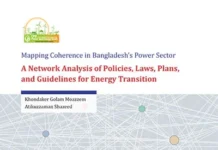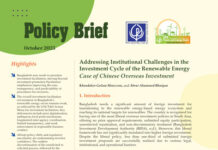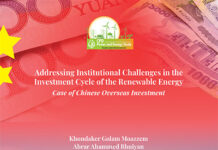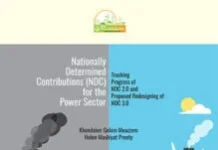 Reflection on Its Strategy and Initiatives
Reflection on Its Strategy and Initiatives
Authors: Khondaker Golam Moazzem, ASM Shamim Alam Shibly
The 8th Five Year Plan (8FYP) is one of the important policy documents during the period between FY2020– 21 and FY2024–25. Like earlier Five Year Plans, the power sector has got special attention in the new Plan with a view to ensuring access to electricity, supporting economic activities and promoting industrialisation. In the backdrop of persistent weaknesses and challenges in the power sector during the immediate-past FYP period (7FYP) as well as economic slowdown caused by the COVID-19 pandemic, the study examines how the 8FYP addresses on the challenges in the power sector and whether the long-term targets set in the Plan is consistent with the future outlook of the power sector including development of the clean power sector. The study observed positive changes in the power sector during the 7FYP period which include higher public and private investment, better access to electricity to consumers and gradual reduction of transmission and distribution losses. However, the 7FYP period ended with a number of challenges including: (i) over-generation capacity, (ii) under-utilisation of power plants, (iii) poor efficiency of power plants, (iv) increasing public debt of the Bangladesh Power Development Board (BPDB), (v) fiscal-financial pressure on importing fossil-fuel, and (vi) little attention on the renewable energy development. These challenges have received little attention in setting targets for the 8th plan period. In case of primary energy, the 8FYP has little shift from the earlier policy stance. There is no comprehensive outlook on renewable energy in power generation—8FYP focuses mainly on hydro-power. Without appropriate measures and initiatives, the problems would further exaggerate during the coming years. In this backdrop, the study suggests to emphasise in the 8FYP period on undertaking proper measures such as demand rationalisation and demand-side management, enhancing efficiency of power plants, cost reduction, abandoning coal-fired power plants, abandoning old, expensive fuel-based and quick rental and rental power plants, gradual shifting towards cleaner energy-mix by enhancing use of non-conventional renewable energy mix for power generation.







![Currents of Change [Volume-3, Brief-01] Quarterly Brief of the Power & Energy Sector of Bangladesh](https://cpd-power-energy-study.com/wp-content/uploads/2025/10/Currents-of-Change-Volume-3-Brief-1-2025-1-1-218x150.jpg)
